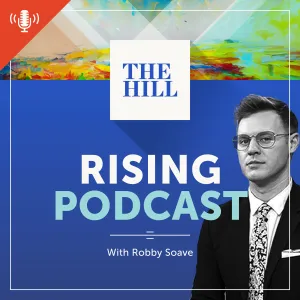Back to the future? The new interest rate normal might look a lot like the pre-crash era

Between April and October 2023, yield on the benchmark 10-year Treasury note rose by about 150 basis points. Other long-dated Treasuries also saw a sharp uptick in their yields. The bond sell-off (reflected in falling bond prices and rising yields) raised alarm bells in several quarters and generated an active debate about the future cost of borrowing.
Even as the Federal Reserve approaches the end of its rate-hiking cycle, there is confusion surrounding the direction of long-term rates, as highlighted by the sudden drop in yields in early November. The 30-year fixed rate mortgage and corporate bond yields (both of which closely track the 10-year T-note yield) and the interest rate cost facing the U.S. government are all affected by treasury market swings.
Some have noted that we may be entering a new era of persistently higher interest rates. They argue that the ultra-low rates and highly accommodative monetary policies put in place in the aftermath of the global financial crisis was an aberration, and that normalization may finally return us to rate levels commonly observed in the pre-crash era.
Before 2008, the consensus view held that the U.S. nominal neutral policy rate was about 4 percent (reflecting a real neutral rate or r-star of 2 percent and an inflation target of 2 percent). Ten-year T-note yields ranged between 4.5 percent and 6.5 percent during the decade prior to the financial crisis.
Following the crisis, the Fed kept policy rates near zero between December 2008 and December 2015. In addition, it pursued three rounds of Quantitative Easing or QE, which pushed down yields on long-dated securities. The rate hiking cycle that began in December 2015 and ended in December 2018 only saw a peak policy rate of about 2.5 percent. Consequently, the yield on the 10-year treasury note was often stuck below 3 percent during the 2010s.
Following the recent inflation shock, the Fed belatedly began its current rate hiking cycle in March 2022. The benchmark 10-year T-note yield has risen since hitting a historic low in 2020. There has, however, been a marked increase in volatility in recent months, contributing to broader economic uncertainty.
Multiple factors bear responsibility for recent volatility. Although some are of a temporary nature, many reflect fundamental disagreements about critical structural issues. For one thing, a massive surge in long-dated bond issuance by the U.S. Treasury during the third quarter of this year generated a supply spike.
The Fed’s reduction of its balance sheet — referred to as “quantitative tightening” — has been another factor, as it means the bond market lost a major price-insensitive bond buyer. Other former marginal buyers of treasurys, such as foreign central banks and commercial banks, have also become net sellers of late. They have increasingly been replaced by hedge funds and other more price-sensitive buyers, which has contributed to heightened market volatility.
Based on the surprising resilience of the U.S. economy during the third quarter, there is a growing conviction in the bond market that the Fed is indeed likely to maintain rates higher for longer. This has shifted expectations regarding the future path of short-term rates. This also contributed to a spike in long-dated treasury yields.
Economic theory suggests that the 10-year T-note yield reflects expectations about the future path of short-term interest rates, which in turn reflect current expectations regarding inflation and economic growth. The term premium that goes with longer-term debt captures the risk compensation associated with the uncertainty surrounding future inflation and economic outlook, as well as the uncertainty surrounding interest rate changes that may occur over the life of the bond. After remaining persistently negative for several years, the term premium has finally turned positive.
Looking ahead, there is uncertainty regarding key factors that are likely to influence long-term rates. Nominal GDP growth (the real GDP growth rate plus inflation), which is linked to 10-year T-note yield, has experienced substantial volatility lately.
Will real potential GDP growth rate remain underwhelming (estimated at 1.8 percent), or, will the nascent AI-driven revolution revive productivity growth and boost trend GDP growth rate over the coming decades?
Are we going to return to the era of persistently below-target inflation that characterized much of the 2010s? What if deglobalization, climate change and the green transition, demographic shifts, restoration of labor’s bargaining power, and other structural changes keep inflation rates in the 3 percent to 4 percent range over the coming decade?
Another wildcard is the extraordinary surge in public debt and sustained large-scale deficit spending. The high level of debt, much of which was accumulated during an era of historically low rates and ultra-accommodative monetary policies, now poses a much more severe risk as borrowing and roll-over costs remain elevated.

This has led some to suggest that high rates are not sustainable — that we are on the cusp of a debt shock that will force us back to ultra-low rates and central bank easing. Others fear that the term premium will remain elevated as investors are likely to seek a greater risk premium to protect themselves against future interest rate and geopolitical shocks.
Looking beyond the heightened volatility and knee-jerk market responses of recent weeks, it is necessary to attain greater clarity regarding any structural shifts that might affect price stability, growth prospects, and fiscal sustainability over the coming years. Given the inherent difficulties associated with identifying such shifts, we may be in for an extended period of interest rate volatility.
Vivekanand Jayakumar is an associate professor of economics at the University of Tampa.
Copyright 2023 Nexstar Media Inc. All rights reserved. This material may not be published, broadcast, rewritten, or redistributed. Regular the hill posts












